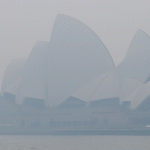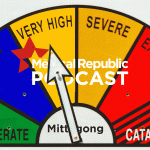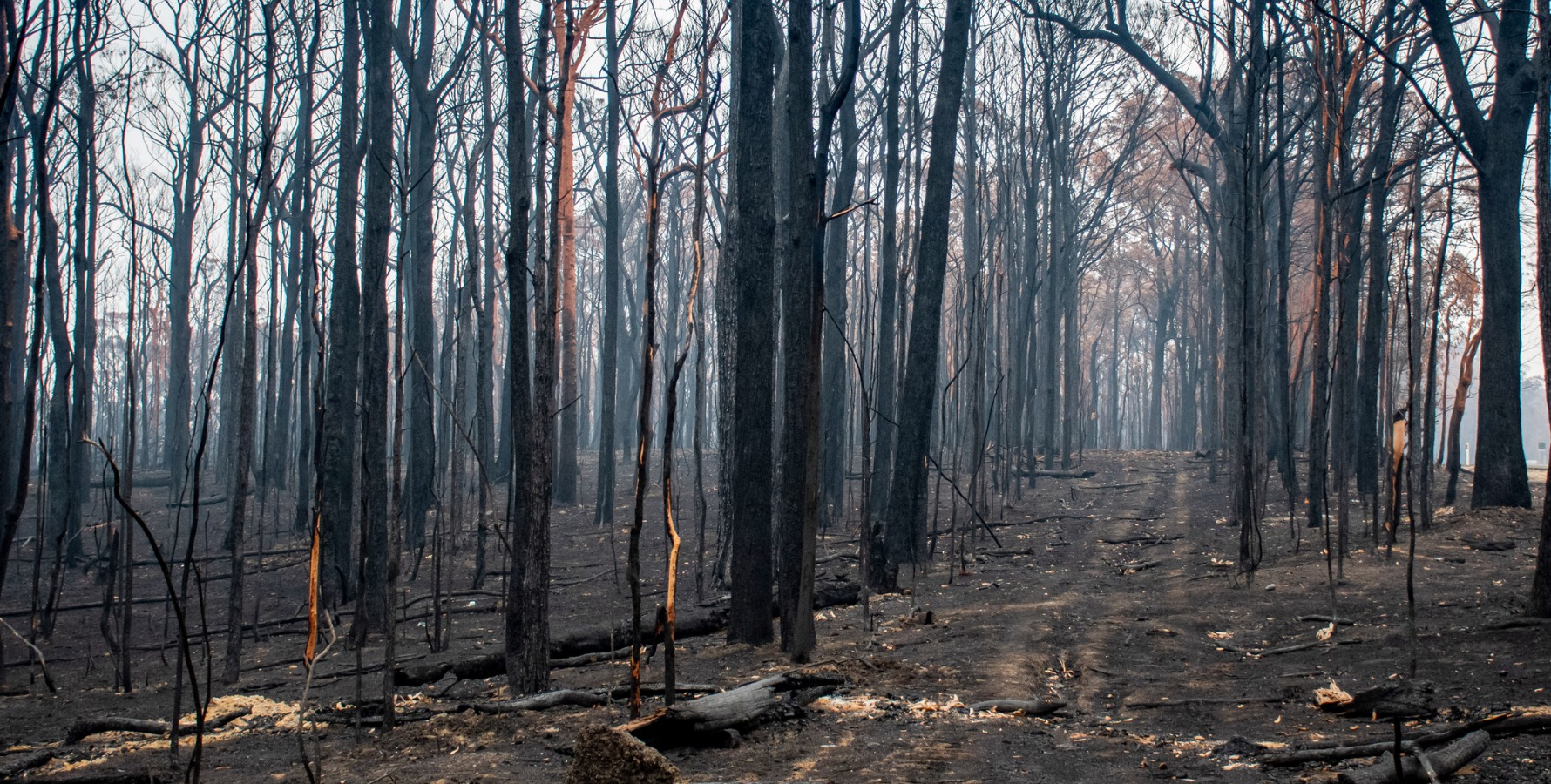GPs and patients, rural and urban, have barely recovered from the Black Summer bushfires as the next season looms.
If Michelle Hamrosi scooped up her three children and ran to the beach fast enough, she could make it to the edge of the sea before the flames caught up.
It was a plan the doctor from Broulee had hatched as the fire closed in on her beloved seaside community on the NSW south coast late last December.
When the power went out, and her husband left for the hospital where he was on call, she fled their home and sought refuge with neighbours, watching from their back fence as a bushfire bore down on the village.
“I remember thinking ‘Where the hell do we go that’s safe? How are we going to get there together?’” Dr Hamrosi remembers.
“My youngest daughter wasn’t good enough at walking, and when I was packing that bag to run to the beach with, I threw in a baby carrier because I thought at least she could hop on my back so I’d have my arms free for the other two kids.”
Then came the wind.
“Just as we were about to run to the beach, it just suddenly whirled around and changed direction, and the fire that was approaching turned away,” she says.
In the summer of bushfires that razed more than 12.6 million hectares of land, pumped 434 million tonnes of carbon dioxide into the atmosphere, killed 33 people and caused the early deaths of another 429, Dr Hamrosi fled her home three times.
“We’d never really thought it would come right up close to our town, but that’s what happened, and it happened so quickly,” she tells The Medical Republic.
Some of Dr Hamrosi’s patients and colleagues lost their homes and their businesses.
She was one of just two doctors at her practice who worked with handwritten notes and head torches to treat members of her community presenting with trauma and anxiety in the aftermath of the fires.
Further south, Dr Louise McDonnell was doing everything she could to help the hundreds of people who poured into the Bega evacuation centre.
She’d been staying with friends at their new home in Tanga when a neighbour woke them at 3am who to say the fire was close.
“I know my friends were very anxious. I was relatively calm because I knew we had a bit of time,” she tells TMR.
Dr McDonnell helped her friends bundle their valuables into sheets before they clambered into their cars and set out for Bega.
“It was just on dawn when we arrived, and there were already a lot of horse trailers and campervans starting to park in the oval at the showgrounds,” she says.
“Some people had staked out an area to sleep.
“I grabbed my script pad from my glovebox, because I carry it in my car, and went over to the reception and said I’m here, I’m a GP, if you need I can help out.”
Dr McDonnell and her friends walked into town for breakfast, and when they returned an hour later, patients were lined up waiting to see her.
“I just kept working, writing scripts and seeing people all day, it was pretty constant, people just kept coming in.
“The place got busier and busier, and by 8pm it was pretty full.”
She was approached by a pregnant woman worried about the effects of the smoke on her unborn child. At the same time, other patients presented with ash under their eyelids, and a father who tried to save his family’s home arrived at the centre in severe mental distress.
“It was like he’d been in a warzone,” Dr McDonnell says.
“His eyes were bright red, he was hyped, and he said ‘I’ve just driven in, I’ve lost my house, I’ve lost everything, I nearly died’, because the powerlines hit the ute he was driving as he was heading out.
“He was just wired. They lost their whole home.”
Some doctors in NSW and Victoria who offered to help at evacuation centres where their patients had fled were sidelined and even turned away, blocked by disaster response and command structures that don’t include general practitioners.
But Dr McDonnell says primary carers play a vital role in preparing communities for disasters and making sure they are getting the help they need when catastrophe strikes.
“There’s still a lot of room where we can better educate and prepare people for disasters generally because there’s going to be more of all of the disasters, fires, floods and at this point, pandemics,” she says.
“But there are still battles around the emergency structure and hierarchy, and some areas are more ready to have GPs play a role than others.
“We don’t need to hold on to power; we just need to all help together.”
Driving through Wagga Wagga, general practitioner obstetrician Trudi Beck grew increasingly worried as she passed herds of wandering cattle trailed by plumes of dust.
The farming community remains in the grip of drought and was then entering its third consecutive year without a harvest.
Parched land and soaring temperatures meant the heart of the Riverina was primed for December bushfires that brought with them smoke so thick Dr Beck couldn’t see more than 30m beyond her farmhouse window.
“I got emotional about it because I thought ‘How are we going to protect our kids?’” she said.
“How is our community’s emotional resilience going to survive this off the back of drought?”
Dr Beck’s pregnant patients had questions about what to do and how to protect their unborn children from the smoke.
“I couldn’t give women any information about what prolonged exposure to bushfire smoke could do to their babies, and we had prolonged exposure to smoke.
“At various points over the December and January period we had the worst air quality in the world because it just sat there like a blanket and did not move.”
Most families in the region rely on evaporative airconditioning because it’s cheaper to run and works well in the dry atmosphere – but it would pull smoky air from outside into their homes.
It meant only those with a reverse-cycle airconditioner could use switch it on during the peak of summer.
“Beyond the health effects that has on pregnant and breastfeeding women, for families with newborns, older populations, people who couldn’t go anywhere, I don’t think we can quantify the physical and mental health effects of that,” Dr Beck says.
A young family with a little boy and a newborn spent six weeks living out of a hotel room after being forced to evacuate their home in the hills and ended up at Dr Beck’s dining table before being sent home with meals prepared and packed by the community.
Running dry
The true impact of drought, fires and coronavirus are yet to be felt in communities like Wagga Wagga because the crises have rolled on.
Very few families live close to their extended relatives, and Dr Beck says they’ve been further isolated by travel and social restrictions.
“We have all these sayings about how it takes a village to raise a baby, but we’ve stripped families of their village through all of this,” she says.
“From a medical perspective we can argue that while we need to protect the community’s most vulnerable, I also feel to a certain extent we haven’t done anything to protect some of the rest of the community’s most vulnerable, like young families.
“We haven’t facilitated families thriving. They’re just surviving and not much more.”
Dr Beck says the bushfires and the pandemic have exposed the chronic underfunding of mental health services, and that there is nowhere for her to send out-of-town patients who need face-to-face support.
The disasters have eroded the resilience of families and women at a time when they’ve never been so socially isolated.
The consequences of climate change are showing up in waiting rooms where doctors are dealing with the fallout, like in the western Sydney practice where Dr Kim Loo treated respiratory failure and pulmonary disease patients struggling to cope with a smoke haze that hung over the city for weeks.
Bushfire smoke is dangerous for patients with pre-existing conditions and even the perfectly healthy, but when fires have torn through houses and industrial areas, it can be toxic.
“I found it frightening during that time,” Dr Loo said.
“You feel powerless to help your patients when the smoke is there because you can’t protect them against it.”
Patients whose asthma had long left their lungs became sick once again, and mums with young children were isolated in their homes because it was too unsafe for them to play outside.
Dr Loo says some of her patients are yet to recover, and the pandemic that came on the tail of the bushfires has made it worse for others.
“We’ve got 16 doctors in our practice, and the bulk of presentations are for mental health because our patients are now unemployed,” she says.
“I’ve got patients who live on the margins and the mental health impact on our population is exceeding the health impact, even though the health impact is devastating.”
For her patients, being cut off from everyone else has had an enormous influence on their wellbeing, and many can’t afford the technology needed to stay connected.
The taste of climate change
What they’ve witnessed at work has pushed practitioners like Dr Loo and Dr Hamrosi to join climate actions groups like Doctors for the Environment Australia.
“A lot of my patients are aware of climate change, and to be able to taste and smell it for two months, there was fear that this is just beginning, and what’s going to come?” Dr Loo says.
They are both lobbying governments to build resilience, address the public health crisis and introduce measures so that they and the system they work in can cope.
“Our practices need to become more resilient in the face of any disasters because they’re going to be occurring more frequently,” Dr Hamrosi says.
“I do believe it is an absolute, fundamental part of our role as doctors and health professionals to speak up about climate change just like we did about tobacco and the links between asbestos and mesothelioma.”
The summer bushfires left behind a $1.95 billion bill for smoke-related healthcare, and that doesn’t take in mental health issues, future health outcomes or productivity losses.
However, that toll is being documented by a team of University of Wollongong researchers. They have spent years going into burnt-out communities and relaying the impact of bushfires back to the Rural Fire Service.
Dr Katharine Haynes has sat down with people in the aftermath of disasters since 2005 and says the impact of Black Summer was different.
“We’re finding a lot of distressed people, more so this time than during other post-disaster work,” Dr Haynes tells TMR.
“There’s a whole new level of anxiety and distress out there and that’s because people were under threat for so long during the last fires.”
Some research participants evacuated their homes seven times, and it wasn’t the first time they’d been through it.
“We’re finding with these interviews people are saying they had learnings from the 2013 or they went through the 2009 fire,” Dr Haynes adds.
“There seem to be so many experiences that people have had themselves in recent years that it just seems to be back to back, and I wonder how much more people can take, with climate change and more frequent events.
“It used to be that maybe if you were unlucky, it would happen once in your lifetime.”
A role for GPs in disaster response
In 2013, hundreds of school students became trapped in their classrooms when bushfires tore through the Blue Mountains.
Houses were destroyed and millions of dollars in tourism revenue lost, but there remains a sense of relief that no one died.
Still, the lessons were learnt.
“The 2013 bushfires really pushed us into action in terms of preparedness for the next bushfire disaster,” Lizz Reay, chief executive of the Nepean Blue Mountains Primary Health Network, tells TMR.
The tight-knit region worked on the run to pull in general practitioners who could work around the clock, find places for patients to go and to work with authorities to get people to help.
“The major learning after the 2013 fires was unpicking and understanding the emergency response protocols, because you can’t just spot an emergency and say ‘We’ll just put GPs here’ – there’s a whole command and control structure,” Reay says.
In the years since the 2013 disaster, primary health carers worked with emergency services to carve out a space for them in disaster response plans.
“We’re now part of the emergency management structure in our region, so even when there is no emergency, we attend the meetings, and we are part of that committee,” she says.
“You can’t just have people turning up and offering to assist. It just doesn’t work.
“We understand the emergency response mechanisms and chain of command, we all know each other’s roles and what we can offer and have an appreciation for the role primary care can play.”
One of the people who championed the change is Dr Penny Burns, Deputy Chair of the RACGP Specific Interests Disaster Management network.
“After a couple of bushfires, GPs have described how their waiting rooms were full, and they arrived early to work to find people waiting at the front door to get in,” she recalls.
“The waiting room fills up with people who are distressed, disoriented and crying, they’ve lost family members, they don’t know where people are, they can’t contact people, their world has changed, and it’s black outside or it smells of smoke.”
Dr Burns has seen general practitioners still picking up the pieces for their patients years after disasters like the Victorian bushfires and Christchurch earthquakes struck.
But what is missing is their involvement in the official emergency response when chaos is unfolding.
Dr Burns is working to change that.
She wants to see doctors included in plans in a similar way to paramedics, who during a response have a clear chain of command, are linked in with emergency services, have access to equipment and are supported when they withdraw.
“They’re also part of the bigger discussion after the event to see what the lessons learnt are,” Dr Burns says.
It’s a different scenario for GPs, who in some regions have gone to evacuation centres and been isolated from the more significant emergency response.
Bushfires preparedness among primary health carers is also patchy from town to town; however, Dr Burns says the model rolled out in the Blue Mountains is being replicated elsewhere.
“We’ve still got a long way to go, and there are a lot of committees meeting at the moment to work out how we can better link GPs in, but their value is being seen.”






